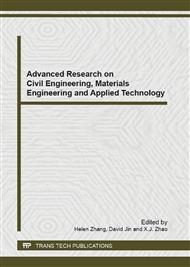p.444
p.448
p.453
p.457
p.463
p.468
p.473
p.477
p.482
Applied Technology in Robust Optimization Model for Airport Flow Allocation
Abstract:
To solve the airport arrival and departure flow allocation problem under the condition of uncertain capacity, one of robust optimization methods was applied. Applied technology in Robust Optimization Model with the aim to minimize expected delayed flights at certain robustness level was proposed. The robustness factor constraint, airport capacity curve constraint, fix capacity constraint and airport capacity scenario constraint were included. To test how well the model would be in real world, a numerical test was performed based on the data of a Chinese international airport. Test results show that there is a negative relationship between expected delay flights and robustness level. Compared with typical model, Applied Technology in Robust Optimization Model proposed achieves better effect at the same robustness level.
Info:
Periodical:
Pages:
463-467
Citation:
Online since:
December 2013
Authors:
Keywords:
Price:
Сopyright:
© 2014 Trans Tech Publications Ltd. All Rights Reserved
Share:
Citation:


